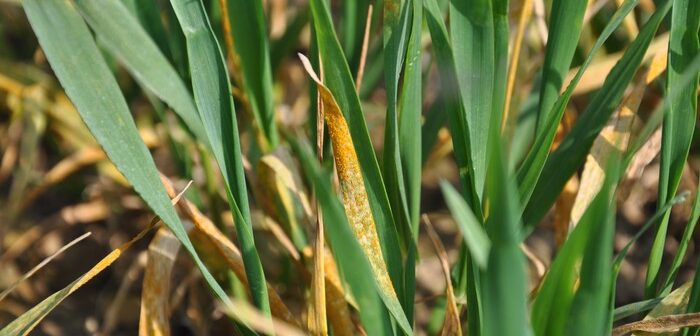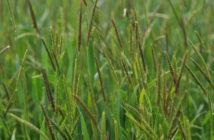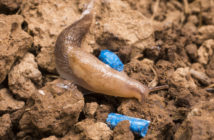Stay alert for yellow rust risks, and not just Septoria tritici, at the upcoming leaf three (T1) spray timing, winter wheat growers are being urged.
Although Septoria is widespread, yellow rust can escalate more rapidly, says Syngenta area business manager, Peter Hawkins, and the mild winter means the disease may have already progressed to younger leaves, even if not visible.
“Although Septoria will be the main wheat disease growers will focus on, it’s important not to let yellow rust slip through the net at the important T1 fungicide spray timing, which is typically during April,” says Mr Hawkins.
Not too cold for rust
“The amount of yellow rust in the plant can be reduced by frosts, but temperatures need to be harsher than often realised – for example five days of continuous minus 5-6 deg C. Don’t assume March’s cold weather will have been enough to eradicate rust.
“Depending on the weather, yellow rust can bounce back quickly – going through its life cycle in just 10-12 days, compared with 14-28 days for Septoria tritici. This explains why it’s so important to halt it early. It can also cause big yield losses of up to 50%.”
In response, Mr Hawkins says ensuring T1 fungicides target yellow rust and not just Septoria will be an important consideration. Leaving yellow rust control to the flag leaf timing (T2) could be too late, he notes.
Strong yellow rust activity
“AHDB dose response curves show the SDHI fungicide Elatus Era has very strong yellow rust activity, with our own trial work showing T1 is the best time to apply it against yellow rust. This is in addition to the protection it provides against Septoria tritici.
“If you check crops at T1 and think there’s no rust and don’t include a yellow rust active fungicide, you can find soon after T1 that yellow rust has suddenly appeared. I’ve seen this happen. You then have the conundrum of do I go back in with a T1.5 spray for yellow rust, which costs more, or not? If not, then it can cycle again before T2 in suitable weather, so you’re in a real dilemma.

Peter Hawkins
“A particular issue this season is that the mild winter means disease in some fields has developed at the same rate as wheat plants have been growing. So even if a lower, older leaf has been killed by frost, the disease may have already progressed up into a younger leaf, even though you can’t see it.
“The main aim of T1 is to control disease on leaf three, which is effectively a stepping stone between any disease present on lower leaves and the upper yield-building leaves. These top three leaves contribute about 75% of final winter wheat yield.”
If a suitable T0 fungicide has not been applied before T1, or if there has been a long interval since T0, Mr Hawkins says it could be particularly important to ensure good yellow rust activity is included in the T1 fungicide.
“Inspect crops regularly for signs of yellow rust and take into account variety resistance ratings, but remember that other factors can lead to its rapid flare up, even in more resistant varieties. With heightened Septoria tritici pressures this season, I would also urge growers to look at including the multi-site fungicide, folpet,” he adds.




